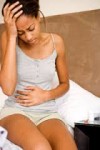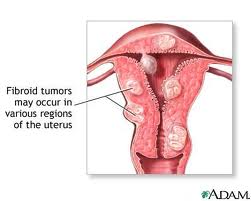 Uterine fibroids are the most common noncancerous tumors in women of childbearing age and the second most common reason these women undergo surgery. Uterine fibroids can lead to significant pain, bleeding, and fertility problems. Treatment options include watchful waiting; treatment with drugs or hormones, embolization, or ultrasound; and invasive procedures such as partial or total hysterectomy. However, there is little evidence about the effectiveness of these therapies or their outcomes, including fibroid reoccurrence and women’s ability to have children.
Uterine fibroids are the most common noncancerous tumors in women of childbearing age and the second most common reason these women undergo surgery. Uterine fibroids can lead to significant pain, bleeding, and fertility problems. Treatment options include watchful waiting; treatment with drugs or hormones, embolization, or ultrasound; and invasive procedures such as partial or total hysterectomy. However, there is little evidence about the effectiveness of these therapies or their outcomes, including fibroid reoccurrence and women’s ability to have children.
Northwestern Medicine will be one of ten investigational sites for a landmark study that seeks to improve the way uterine fibroids, one of the most prevalent health issues impacting women, are treated.
Erica E. Marsh, MD, a reproductive endocrinologist with Northwestern Fertility and Reproductive Medicine, serves as the principal investigator for Northwestern’s portion of the $20 million research project, which evaluates the effectiveness of different treatment strategies for women with uterine fibroids by building a national database tracking patients, treatments and outcomes.
“Right now there’s very, very little clinical trial data on fibroid outcomes,” said Marsh, who is also an assistant professor of Obstetrics and Gynecology-Reproductive Endocrinology & Infertility at Northwestern University Feinberg School of Medicine. “This type of study with a huge sample size in the thousands across the nation will allow us to start to tease apart some of those questions we’ve always asked ourselves as physicians who take care of women with fibroids. What can I tell my patients about the risk of occurrence after one treatment versus another? The impact on fertility? The likelihood that her symptoms will return? Having this type of outcomes data will allow us to answer some of those questions.”

 Uterine fibroids are the most common, non-cancerous tumors in women of childbearing age. The fibroids are made of muscle cells and other tissues that grow within and around the wall of the uterus. See the diagram that shows where uterine fibroids may grow.
Uterine fibroids are the most common, non-cancerous tumors in women of childbearing age. The fibroids are made of muscle cells and other tissues that grow within and around the wall of the uterus. See the diagram that shows where uterine fibroids may grow.